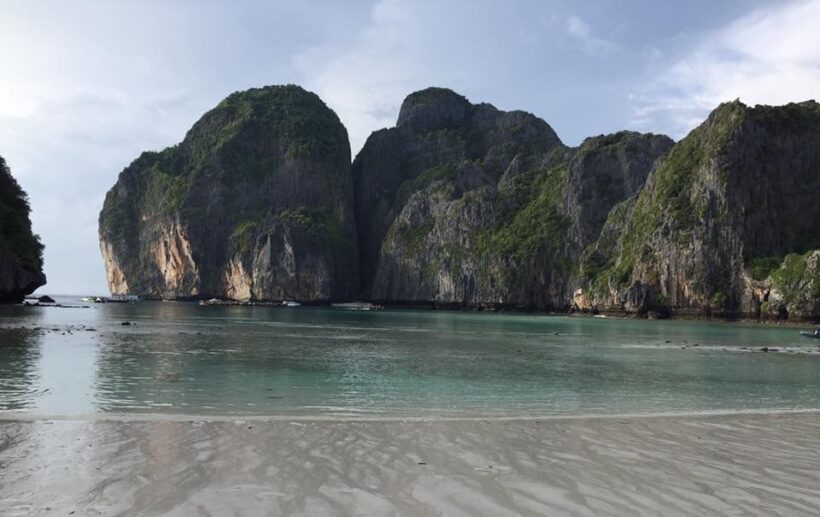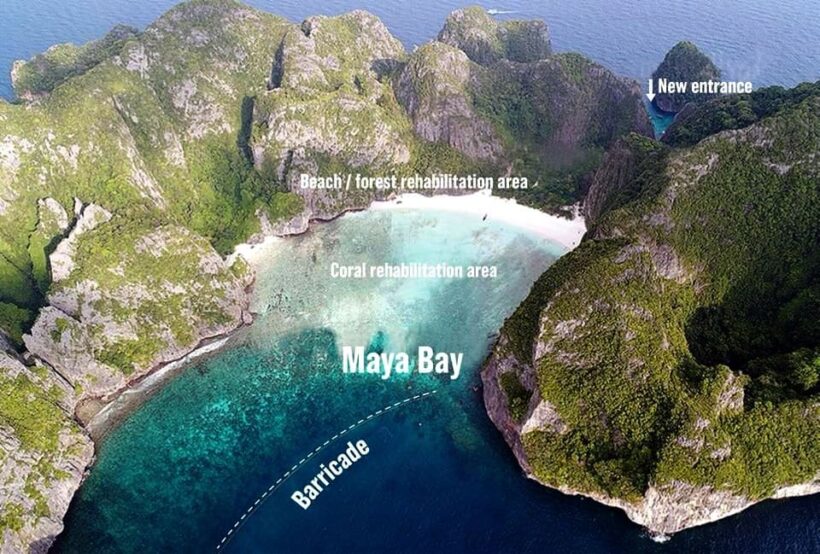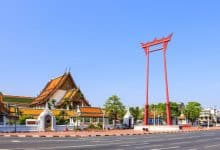Hands off Maya Bay

In one corner, marine scientists and biologists who are urging the government to keep Maya Bay closed as it struggles to rehabilitate following years of tourism abuse. In the other, local tour operators who say that the region’s main money-spinner has been taken away from them affecting their pockets and the many people they employ.
Meanwhile Maya Bay is slowly recovering without the visit of 5,000 tourists and boats every day.
On September 28, the National Parks Department issued an order for indefinite closure of Maya Bay in order to allow more time for damaged coral reefs to recover.
Experts say the four-month closure of Maya Bay was insufficient for rehabilitation due to the popular site’s fragile ecosystem.
Assistant Professor Datchanee Emphandhu of the Forestry Faculty of Kasetsart University, said Maya was like a seriously ill patient who needs more time to recover. Rushing to reopen the place would result in the likely collapse of its ecosystem.
“The damage could be irreversible.”
She was speaking in response to a call by tour companies in the area to reopen the destination once the tourism industry enters the high season later this year.
On September 28, an official announcement was made in the Royal Gazette about the indefinite closure of Maya Bay from October 1, after the previous closure order was supposed to end on September 30.
One of the world’s most-visited tourist destinations, made popular by the Hollywood movie “The Beach”, Maya Bay’s limited 30-rai (4.8 hectares) area, attracts about 5,000 tourists per day on average, or between 1.5-2 million visitors per year.
The National Parks Department, after holding consultations with its advisers and marine experts, said earlier that Maya Bay had been seriously environmentally degraded because of overcrowding.
The department has allowed boats to bring tourists to watch Maya only from a distance while officials work on rehabilitating the area and its fragile ecosystem, including the damaged coral reefs that need more time to regrow.
Marine ecologist, Sak-anan Plathong, from Prince of Songkla University, suggested that the department ensure protection of the fragile ecosystem at Maya Bay and prevent further disturbance to the fragile beach forests inside the nearby island.
“An elevated boardwalk over the fragile sand and forests should be built to help reduce pressure on the ecosystem. If there is going to be a reopening of the beach, it should be delayed beyond the high tourist season, maybe a month or two after the season.”
“In addition, the beach should be given one or two days’ break per week to allow natural replenishment of sand on the beach.”
The number of visitors, he added, should also be restricted.
Assistant Professor Thon Thamrongnawasawat posted on Facebook that the front of the bay should be off limits forever to allow corals to rehabilitate and regrow otherwise all the efforts invested now would become useless.
National Parks Office chief Songtham Suksawang said the department wishes to see the bay’s ecosystem fully rehabilitated before it decides to reopen the bay to tourists again.\
The department is in the process of procuring projects to build a boardwalk and a new floating pier at the back of the island so that coral reefs at the front of the beach will not be disturbed. The department has also commissioned four universities to conduct research on the appropriate number of tourists who should be allowed to visit six popular beach destinations in Thailand: Samet islands in Rayong province; Surin, Similan and Tapoo islands in Phang Nga province; Chang island in Trat province; and Lanta island in Krabi.

STORY: The Nation
Latest Thailand News
Follow The Thaiger on Google News:


























